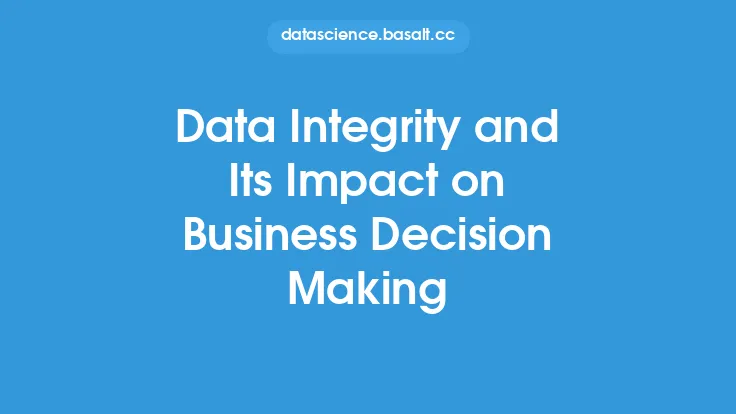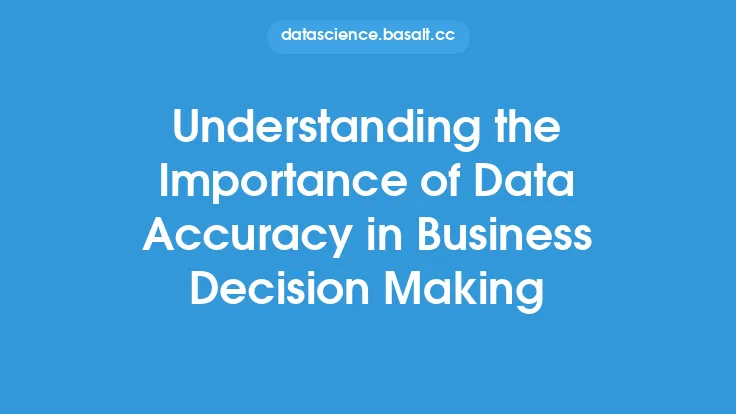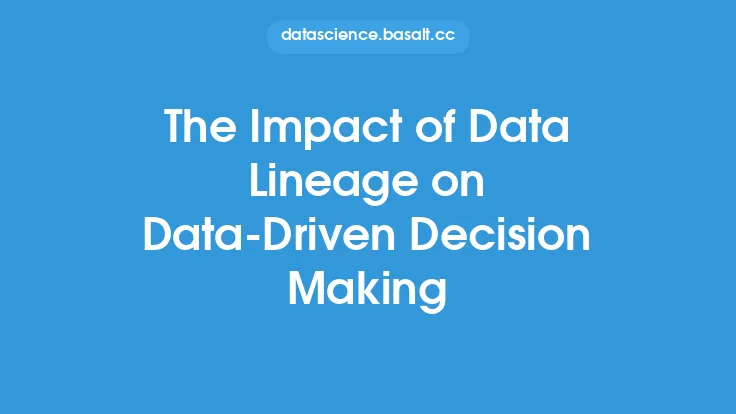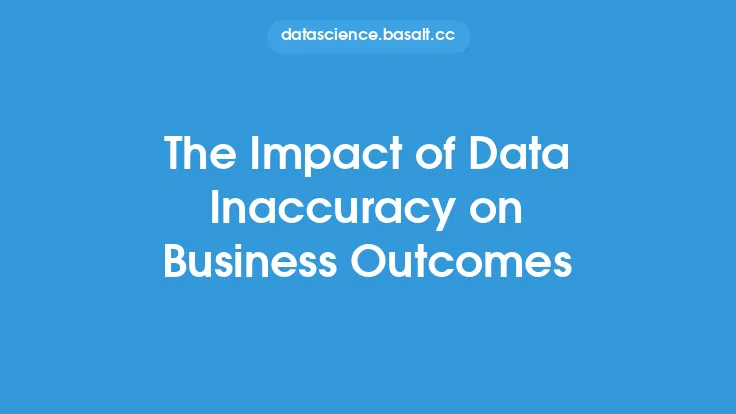In today's fast-paced business landscape, organizations are constantly seeking ways to stay ahead of the competition and make informed decisions. One crucial aspect that has revolutionized the way businesses operate is data processing. The ability to collect, analyze, and interpret large amounts of data has become a key driver of business decision-making. With the exponential growth of data, companies are now relying on data processing to uncover hidden patterns, trends, and insights that can inform strategic decisions.
Introduction to Data Processing
Data processing refers to the process of collecting, transforming, and analyzing data to extract meaningful information. This process involves several stages, including data ingestion, data cleaning, data transformation, and data analysis. The goal of data processing is to convert raw data into a format that can be easily understood and used to support business decisions. With the advent of big data, data processing has become a critical component of business operations, enabling organizations to extract insights from large datasets and make data-driven decisions.
The Impact of Data Processing on Business Decision Making
Data processing has a significant impact on business decision-making, as it provides organizations with the insights they need to make informed decisions. By analyzing large datasets, businesses can identify trends, patterns, and correlations that can inform strategic decisions. For instance, data processing can help businesses understand customer behavior, preferences, and needs, enabling them to develop targeted marketing campaigns and improve customer engagement. Additionally, data processing can help organizations optimize their operations, reduce costs, and improve efficiency by identifying areas of inefficiency and waste.
Data Processing Techniques
There are several data processing techniques that organizations can use to extract insights from their data. These include data mining, predictive analytics, and machine learning. Data mining involves using algorithms to identify patterns and relationships in large datasets. Predictive analytics involves using statistical models to forecast future events or behaviors. Machine learning involves using algorithms to train models on large datasets, enabling them to make predictions or take actions without being explicitly programmed. These techniques can be used to analyze customer data, transactional data, and operational data, providing organizations with a comprehensive understanding of their business.
Data Processing Tools and Technologies
There are several data processing tools and technologies that organizations can use to process and analyze their data. These include relational databases, NoSQL databases, data warehouses, and big data processing frameworks. Relational databases, such as MySQL and Oracle, are designed to store and manage structured data. NoSQL databases, such as MongoDB and Cassandra, are designed to store and manage unstructured or semi-structured data. Data warehouses, such as Amazon Redshift and Google BigQuery, are designed to store and analyze large datasets. Big data processing frameworks, such as Hadoop and Spark, are designed to process and analyze large datasets in parallel, enabling organizations to extract insights from their data quickly and efficiently.
Data Quality and Data Governance
Data quality and data governance are critical components of data processing, as they ensure that the data being analyzed is accurate, complete, and consistent. Data quality involves ensuring that the data is free from errors, inconsistencies, and duplicates. Data governance involves establishing policies and procedures for managing data, including data security, data privacy, and data compliance. Organizations must establish data governance policies to ensure that their data is handled correctly and in compliance with regulatory requirements. This includes establishing data quality metrics, data validation rules, and data security protocols to ensure that the data is accurate, complete, and secure.
Real-Time Data Processing
Real-time data processing involves processing and analyzing data as it is generated, enabling organizations to respond quickly to changing conditions. This is particularly important in industries such as finance, healthcare, and retail, where timely decision-making is critical. Real-time data processing involves using technologies such as stream processing, event-driven architecture, and in-memory computing to process and analyze data in real-time. This enables organizations to respond quickly to changing conditions, such as changes in customer behavior or market trends, and make informed decisions.
Cloud-Based Data Processing
Cloud-based data processing involves using cloud-based technologies to process and analyze data, enabling organizations to scale their data processing capabilities quickly and efficiently. Cloud-based data processing involves using cloud-based services such as Amazon Web Services, Microsoft Azure, and Google Cloud Platform to process and analyze data. This enables organizations to reduce their infrastructure costs, improve their scalability, and increase their agility. Cloud-based data processing also enables organizations to use advanced data processing techniques, such as machine learning and predictive analytics, to extract insights from their data.
Conclusion
In conclusion, data processing has a significant impact on business decision-making, enabling organizations to extract insights from large datasets and make informed decisions. By using data processing techniques, tools, and technologies, organizations can analyze their data, identify trends and patterns, and make strategic decisions. Data quality and data governance are critical components of data processing, ensuring that the data being analyzed is accurate, complete, and consistent. Real-time data processing and cloud-based data processing are also important trends in data processing, enabling organizations to respond quickly to changing conditions and scale their data processing capabilities quickly and efficiently. As the amount of data continues to grow, data processing will become an increasingly important component of business operations, enabling organizations to stay ahead of the competition and make informed decisions.





